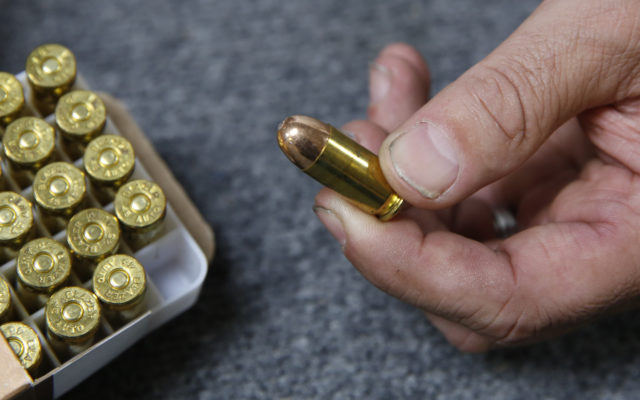
Why not try to hunt all species with non-lead ammunition?
The lead bullets you’re using to shoot deer and moose could be creating an unintended health hazard for your family — and you don’t even know it.
A study conducted in 2009 (Lead Bullet Fragments in Venison from Rifle-killed Deer: Potential for Human Dietary Exposure), and published in PLoS One journal, determined that pieces of lead ended up in 32 percent of the ground venison packages prepared by professional meat cutters sampled.
But there are easy non-lead ammunition available that could change that.
Among the conclusions of that study: “Exposure to lead from spent bullets is easily preventable if health-minded hunters use lead-free copper bullets now widely available and generally regarded as fully comparable to lead-based bullets for use in hunting.”
Lead shot has not been allowed for waterfowl hunting since 1991, and Maine has phased in bans on certain sizes of lead fishing sinkers that can be ingested by birds. But many hunters still use lead shot in shotgun shells they use while hunting upland birds — ruffed grouse and woodcock — or snowshoe hares. And lead bullets are still commonly used by deer, moose and bear hunters.
Still, lead is killing loons, eagles and other animals. One Maine wildlife rehabilitator has taken in five sick bald eagles this month alone. Four of those eagles have died of lead poisoning. With those cases as evidence of worst-case scenarios, it may be time for hunters to think twice about using lead ammunition for shotguns and rifles.
Some hunters have already made the switch, while others say they’ll do so when their current supplies of lead ammunition runs out.
Charles Ostrander of Harmony fits into the latter category.
“I’m using lead right now because I have so many [lead bullets],” Ostrander said. “I’m slowly changing over.”
Jeff Reardon of Manchester is an avid hunter who targets waterfowl, upland birds and deer. He has put a lot of thought into the matter, and is now using lead-free ammo in all situations.
“For my own health and to reduce risks to wildlife who might consume lead I leave in the field, it just makes sense to stop using lead,” Reardon said. “It is a bit more expensive, but compared to what I spend on gas, decoys, boats, and clothing for hunting, my ammunition costs are a drop in the bucket. I’ve spent more on socks for hunting this year than the box of 20 copper bullets for my deer rifle cost me two years ago. That box will get me through at least one more season.”
An internet search showed a popular brand of lead .30-06 bullets — a caliber often used for hunting deer and moose — sell for around $20 for a box of 20 shells. Premium lead ammo can cost around $45 for 20 shells. Copper .30-06 bullets can be found for between $35 and $45 for 20 shells.
Reardon has been using steel shot while hunting waterfowl since that became the law in 1991, and said he transitioned to non-lead shot for upland birds for the first time last fall.
“I’ve noticed no difference from shooting lead. If I miss — which I usually do! — the birds get away. Birds I hit are dead regardless of whether I hit them with steel or lead,” Reardon said. “Although I pick shot out of my birds when I clean them, I feel better about my own health knowing I won’t be consuming lead with my ducks and game birds.”
And Reardon said that after trying out copper bullets for his deer rifle, a .30-06, he found that he liked the way they performed.
“I mostly bought them out of curiosity, but when I tried them at the range they were much more accurate out of my rifle than the lead bullets I had been using,” he said.
Nick Bennett, staff scientist at the Natural Resources Council of Maine, said a healthy avoidance of lead makes good sense.
“I think people should work to minimize their exposure to lead and the amount of lead they put into the environment. Lead is very toxic, and safer, effective alternatives exist,” Bennett said.
And Bennett practices what he preaches. Although he’s not a deer hunter, he does use alternative, lead-free ammo while hunting waterfowl and upland birds and game.
“I don’t use lead ammunition for any of the hunting that I do: waterfowl, upland birds or rabbits. I also don’t use it for shooting clay pigeons either. Steel 7s are fine for that,” Bennett said. “For waterfowl, I use tungsten matrix. It’s very effective. These shells are a little expensive, but when I consider how expensive duck hunting is overall (boat, dogs, decoys, guns, clothes), it’s a drop in the bucket.”
For more information about lead-free ammunition alternatives, visit huntingwithnonlead.org.